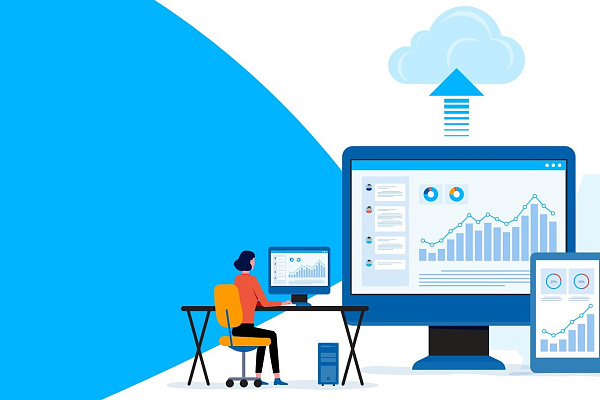In the IT world, the terms "backup" and "replication" are often used interchangeably. That is pretty obvious – backing up a file, an application, or even an entire system implies some form of replication. However, there are some differences between the two concepts and they affect the way they can be integrated into a disaster recovery strategy.
What is backup and replication?
Replication and backup of the virtual environment ensure data integrity, as well as rapid recovery of systems in the event of server failure.
Storing data on one server is risky – it can be lost due to a hardware failure, user or system administrator error. With backups, all information from virtual machines is stored separately, in an external storage location. Even in case of complete server failure, the information is not lost: it will be enough to copy the data from another source. The only disadvantage of this solution is that you need time to transfer the information from another source to a backup server.
Replication of the virtual environment allows you to save time. Veeam Backup & Replication software is specifically designed for this purpose. This is a solution for automatic backups. It is enough to set it up once and it will work without system administrator involvement. For example, all data from virtual machines can be automatically backed up to external storage at a specific time each day. Veeam Backup & Replication works with VMware vSphere or Microsoft Hyper-V hypervisors.
If the primary server fails, the replication software will independently restore VM to the additional server. It is used not only to back up data but also for full replication. This reduces downtime. Often, the virtual system is back up and running so quickly that users don't even notice any technical issues. In addition, the processes run automatically.
Replication vs. Backup
Backup is intended to restore data up to a certain time point. It is performed at periodic intervals, creating special data storage points on the servers. The data can be restored later, for example, in case of file corruption, system failure, or outage. Data backups are done on different media and in different locations, both on local servers and in the cloud.
The solution is especially suitable for storing large sets of static data. For many industries that need to keep long-term records for compliance purposes, this is an optimum approach.
Data backups take hours, so to reduce the impact on production systems, companies back up at night or on weekends.
Data replication addresses business continuity objectives – it ensures the uninterrupted operation of mission-critical and customer-oriented applications after a disaster. Replication involves storing the same data in multiple locations to increase its availability, improve system resilience and reliability. In particular, data replication is essential for disaster recovery to make sure that an accurate copy is always available in the event of a disaster, hardware failure, or system breach.
Having a replica can also speed up access to data, which is especially important for geo-distributed organizations. Placing the data replica closer to the user improves availability and balances network load.
Replication can be synchronous (performed in real-time) or asynchronous (scheduled). In the first option, the entire system is replicated, and subsequent changes between the main system and the replica are synchronized simultaneously in real-time.
With an asynchronous deployment, data is saved to the primary storage first, and there is a slight delay before backup data is replicated. This form of replication uses less bandwidth and takes less time than synchronous replication.
Since the replicated data is updated continuously, it does not provide the historical record of the company's business data as a backup does. Data replication can also be significantly compromised by a malware attack because when data is replicated, the malware also spreads. In such cases, adequate backup is critical to recovering data, at least to the last save point.
Backup, Replication, and Disaster Recovery in the Cloud
Corporate data is getting more and more challenging to manage as it is typically distributed across multiple locations - on-premises and in the cloud. Cloud-based disaster recovery (DR) is much more cost-effective and easier to manage than DR on on-premises infrastructure. For example, you can replicate your data and application environments to the public cloud so that in the event of a failure, you can quickly switch to the cloud copy.
Every business has different backup and disaster recovery requirements. There is no one-size-fits-all solution. Whatever you choose, remember that backup, replication, and rapid recovery are all important technologies that should be considered in comprehensive disaster recovery planning.




